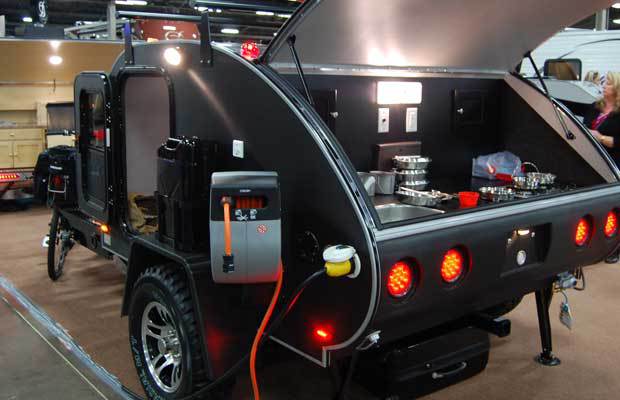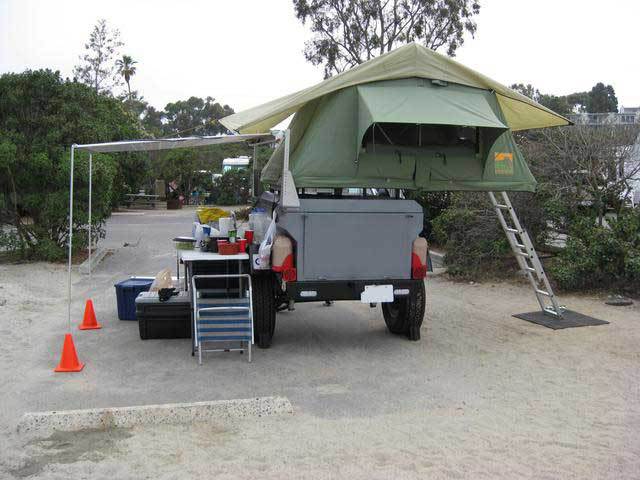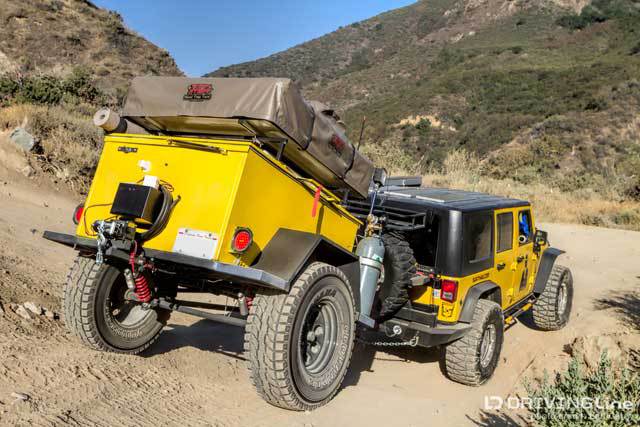
As disaster prepping continues its precipitous rise in popularity it seems every conceivable gadget, defense rig or bit of advice has been done or handed out. Everything’s been thought of, right? Not so fast. When you come right down to it, that advice, those how-to’s are what works for them. “Them” are all the people out there on the internet writing blog articles and posting videos. Most of them have the best intentions. They want to impart their knowledge to others who might benefit from it. But how do you take what they offer and make it your own? How to tweak it, modify it and customize it to what works best for you? This is exactly what should be done for a bug out vehicle, or in this case a bug out trailer. It has to meet your specific needs and include those particular adaptations and improvements that will be comfortably functional for you when everything else is going down the tubes.
Where to Start
First, select a base trailer to build up into the perfect survival masterpiece trailer. Lucky, for you there are a ton of choices out there. Trailers in all shapes and sizes have been manufactured for decades to meet all kinds of utilitarian needs from the professional contractor or construction firm hauling equipment to trailers meant for moving goods to those built for transporting recreational toys. Add to those variations all the recreational camping trailers on the market and the choices seem pretty much endless.
Do your research, envision the finished trailer in your mind, go look at potential buys in person, seek out used trailers for sale to save money, and pick the one that best fits your needs. Remember the longer a trailer is, the more restricted it will be for some locations. Longer trailers, obviously, need a larger turning radius and more space, in general, to maneuver. They are also limited to predominately flat roads as they are unable to manage rolling trails with narrow troughs between steep inclines.
Consider these types as potential bases to build out from;
- Box utility trailers
- Compact horse trailers
- Teardrop trailers
- Airstream trailers (compact versions)
These types provide solid bases from which to customize to your unique specifications offering enough variety to fall within particular budget constraints. The benefit of these trailers is they are already enclosed which is a head start, so to speak, which allows you to jump right into customizing the inside. Having said that, though, there are numerous examples of people who have built up open-topped trailers, or even homemade pickup bed trailers, into rugged, workhorse camp trailers capable of going anywhere the vehicle towing them can go. But more on those later.
Enclosed Trailer
Determine the type of space you want to have inside. Will the trailer be self-contained with room to sleep and move around or will it serve as a gear and supply storage and transport? Once the usage of the inside space is settled on you can set to designing the features; insulated walls, the sleeping and sitting areas, storage (gear, food, water), cooking equipment and fuel (Used inside or out? Is ventilation needed?) and windows.
The biggest decision to make (most likely made before even buying the trailer) is will it be a sleeper or a transporter. Will the environmental conditions require an insulated, indoor living area or will an expansion component like an attached tent or pop-up roof sleeper be sufficient and comfortable?
This trailer has almost every bell and whistle imaginable. Click the image for more photos and details.
If you’re starting with what is, essentially, an empty box on wheels then it would behoove you add a layer of insulation, especially if you plan to sleep inside. The typical, recreational, camp trailer will already be insulated but it’d be worth checking its condition if the unit is an older model. Insulating a cargo trailer is done in the same fashion as insulating the walls of a house. The trailer will already have ribbed, structural support throughout, just as a wall has studs. Cut and fit sections of insulation between these ribs and cover over with sheets of plywood, measured and cut to fit properly and don’t forget to do the same with the roof.
From here, the rest is a custom job, built to your standards and needs. Aftermarket interiors such as cabinetry, foldout beds, convertible seating (into sleepers), and counters are available from various travel trailer retailers or you can build them yourself. Sinks and plumbing are easily found at supply stores and counters can be built to fit a typical camp stove. Research space-saving techniques online for innovative storage areas, utilizing every empty space inside and out. Add storage fuel and propane tanks, generators and batteries outside to avoid gasses from building up creating dangerous conditions inside. For additional energy supply needs beyond fuel, with most trailers’ flat roofs, consider installing solar panels or even a roof-mounted, wind turbine.

Sleeping tents are a popular add-on to some bug out trailers.
Open Trailer
The open utility trailer comes in a full range of forms and sizes. By the term “open” we mean what is essentially, a flatbed trailer with 1-2 foot sides all around or a shallow, open-topped box on wheels. A popular customization for these is to convert them into tent trailers. A number of companies have cropped up over the years that manufacture folding or pop up tents that collapse into a zipped up square and overlays the open trailer. The tent and its support platform are hinged on one side and raise like a hatchback and serve as a cover lid for the open-topped trailer. The inside space is used for equipment and supply storage which can be partitioned off to effectively organize supplies. Or a portion of the inside houses slide-out storage containers or even full, outdoor kitchen setups with stove, sink and counter space.
Many people who go this route with their bug-out trailer make them into truly rugged, go-anywhere contraptions. Fitted with independent suspension, off-road tires and specialized hitches with couplings that allow for extreme vertical and horizontal towing angles these trailers can go virtually everywhere the vehicle towing them can go.
Both types of trailers, open-topped and enclosed, can incorporate external storage containers mounted to the outside walls, on over-sized wheel wells and to the roofs. There is often space on the trailer’s tongue for sturdy containers, propane tanks for cooking fuel or battery banks to store power. The customization opportunities are extensive, limited only by your imagination, time and to some extent, your wallet.http://fpnws.wpengine
Trailers are really one of the most versatile, bug-out vehicle options able to carry all that’s needed for a survival situation – food, water, shelter and lots more – the essentials, all piled into a mobile home away from home.























